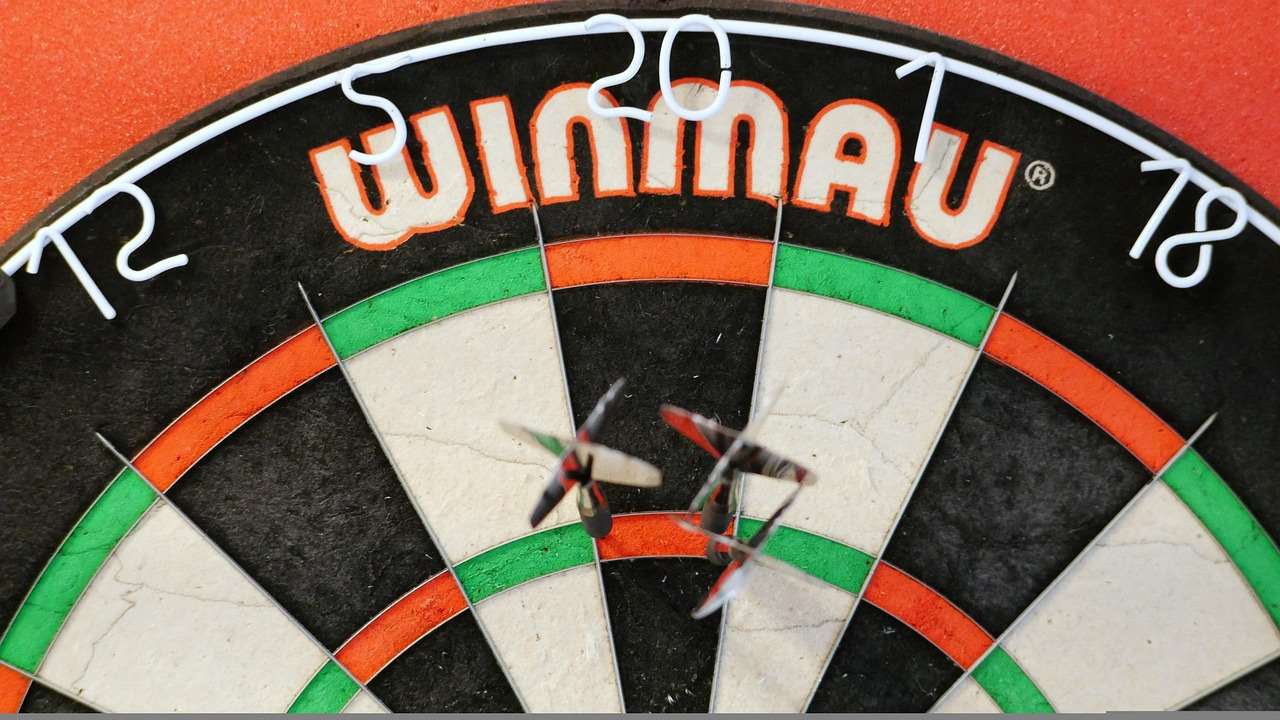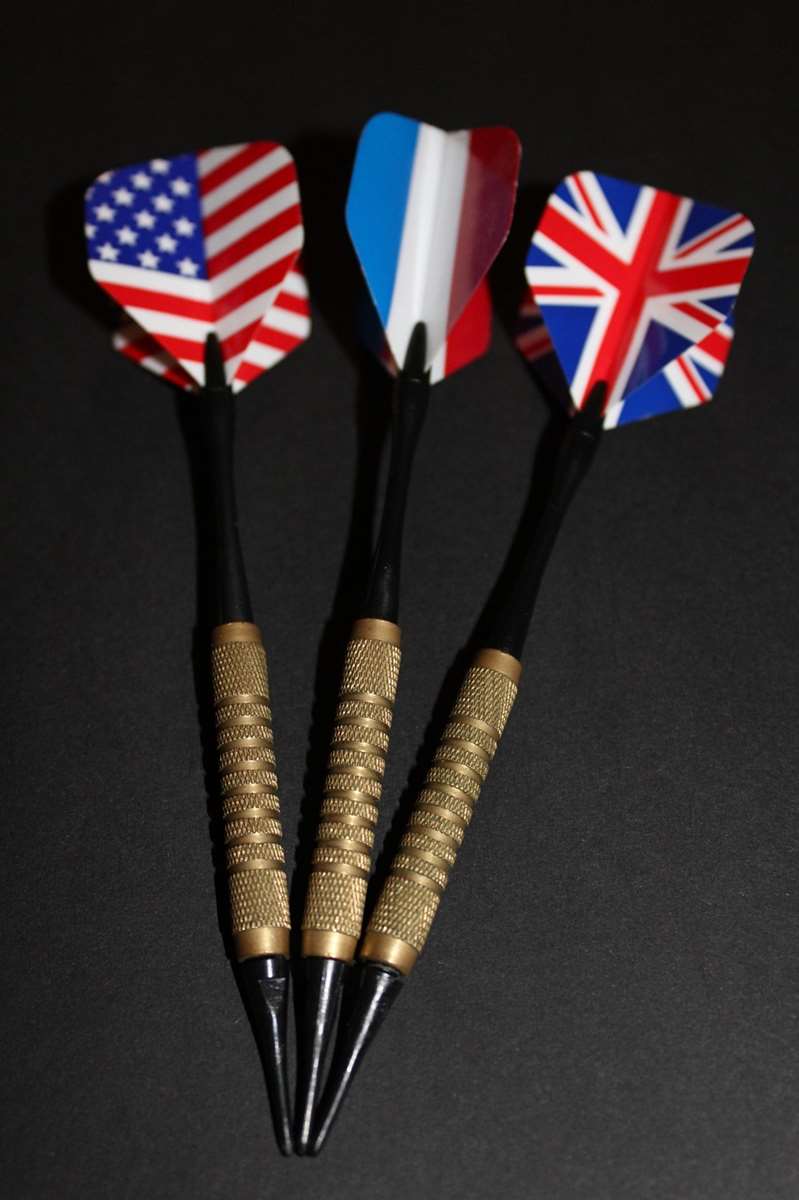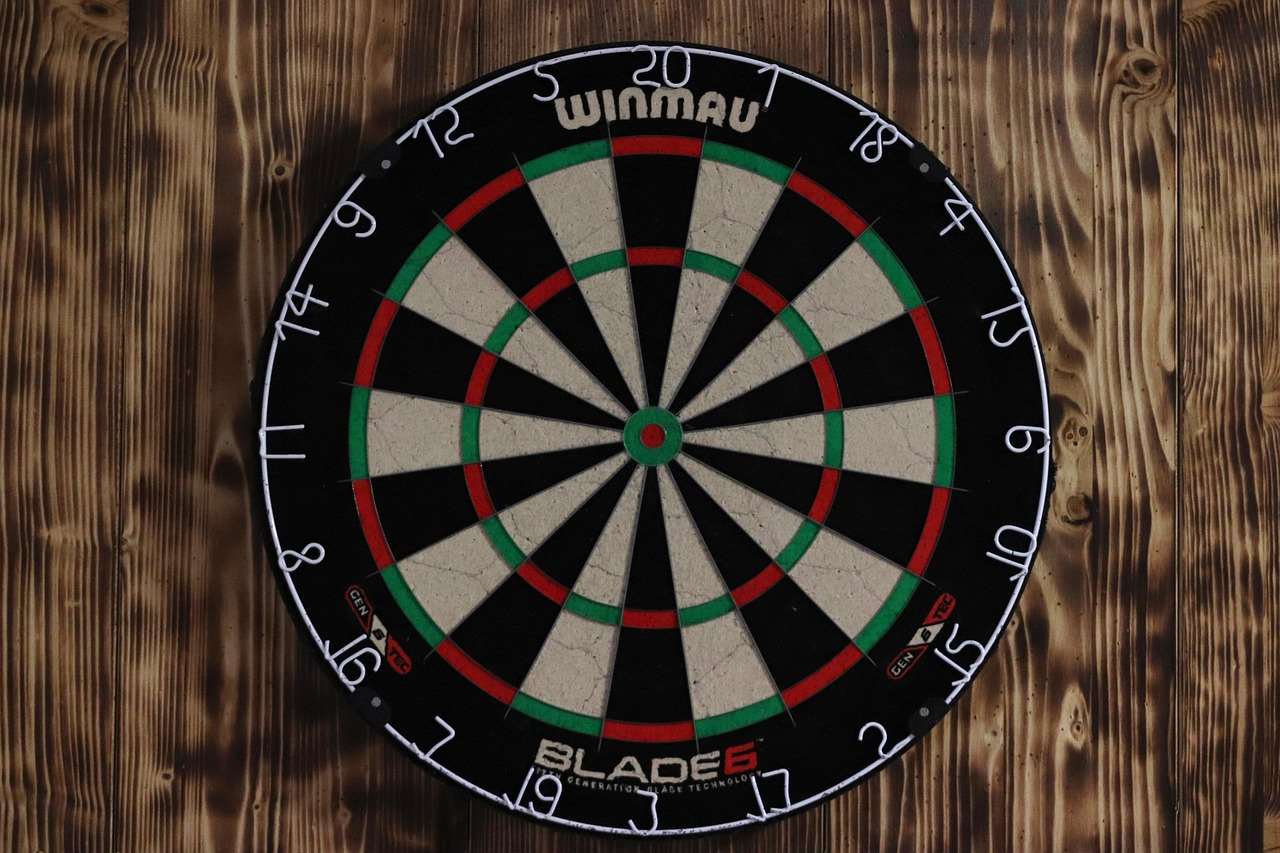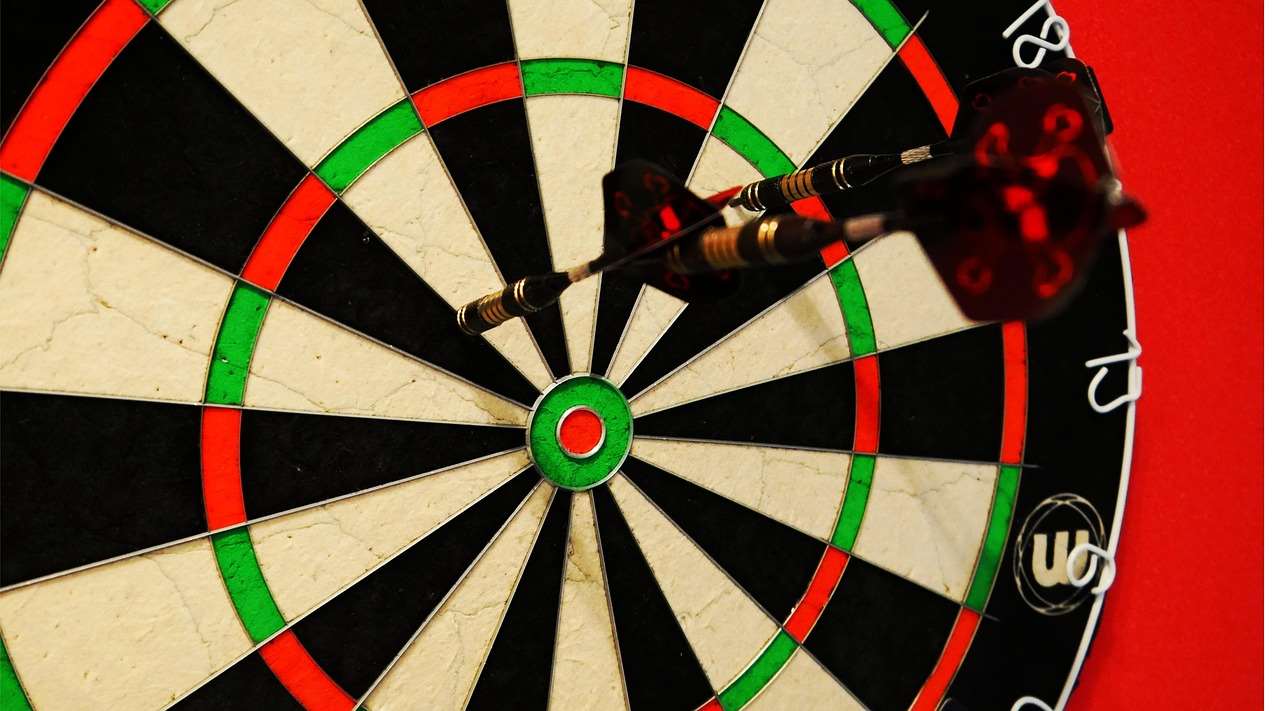Mastering betting on head to head matchups requires a strategic approach focusing on in-depth analysis and understanding the nuances of individual player performance; success hinges on accurately predicting which competitor will outperform the other. This comprehensive guide dives into the key factors to consider, from statistical analysis to psychological elements, helping you make more informed and profitable betting decisions.
⚠️ Still Using Pen & Paper (or a Chalkboard)?! ⚠️
Step into the future! The Dart Counter App handles all the scoring, suggests checkouts, and tracks your stats automatically. It's easier than you think!
Try the Smart Dart Counter App FREE!Ready for an upgrade? Click above!
Understanding the Basics of Betting On Head To Head
Betting on head to head, often abbreviated as H2H, is a straightforward wager where you predict the winner of a contest between two specific individuals or teams. It’s prevalent in various sports, including darts, tennis, golf, and motorsports. The beauty of H2H betting lies in its simplicity; there are only two possible outcomes (excluding draws where applicable and if offered), making it easier to analyze and potentially more predictable than multi-participant events.
Before placing any bets, it’s crucial to understand the different types of odds formats used by bookmakers. The most common are:
- Decimal Odds: Represented as a single number (e.g., 2.50). Multiply your stake by the decimal odds to calculate your potential return, including your stake.
- Fractional Odds: Expressed as a fraction (e.g., 3/2). The first number represents the profit relative to the second number as your stake.
- American Odds: Displayed with a plus or minus sign (e.g., +150 or -120). Positive odds indicate the profit you would make from a $100 stake. Negative odds show how much you need to bet to win $100.
Understanding how to interpret these odds is essential for accurately assessing the potential value of your head to head bets.

Key Factors for Successful Head To Head Betting
While H2H betting seems simple, consistently profitable betting requires a thorough understanding of the factors that can influence the outcome. These include:
Statistical Analysis
Data is your best friend when it comes to betting on head to head. Dive deep into the relevant statistics for each competitor. This could include:
- Win/Loss Record: A basic indicator of overall performance, but should be considered in context.
- Recent Form: How have they performed in their most recent matches or events? Recent success often breeds confidence. Learn Recent Form Impact Darts Betting.
- Head-to-Head Record: How have they performed against each other in the past? Some competitors have a psychological edge over others. Consider Head To Head Stats Darts Betting.
- Performance Metrics: Specific metrics relevant to the sport. For example, in darts, this would be average score, checkout percentage, and 180s per leg.
By analyzing these statistics, you can gain a more objective understanding of each competitor’s strengths and weaknesses.
Venue and Playing Conditions
The location of the event and the playing conditions can significantly impact performance. Factors to consider include:
- Home Advantage: Does one competitor have a home advantage? Playing in front of a supportive crowd can boost performance.
- Surface/Environment: The specific playing surface (e.g., grass vs. clay in tennis) or environmental conditions (e.g., heat, humidity, wind) can favor certain competitors.
- Travel Fatigue: If one competitor has traveled extensively to reach the event, they may be fatigued, impacting their performance.
Don’t underestimate the impact of these external factors on the outcome of a head to head matchup.
Psychological Factors and Player Mentality
The mental aspect of competition is often overlooked but can be a decisive factor. Consider:
- Confidence: Is one competitor on a winning streak, exuding confidence?
- Pressure: How do they handle pressure situations? Some competitors thrive under pressure, while others crumble.
- Motivation: What is at stake for each competitor? Is one more motivated to win than the other?
Assessing these psychological factors can provide valuable insights, especially when combined with statistical analysis. Understanding Analyzing Dart Player Form Statistics can help in this area.

Strategies for Profitable Betting On Head To Head
Once you’ve gathered the necessary information, it’s time to develop a betting strategy. Here are some approaches to consider:
Value Betting
Value betting involves identifying situations where the odds offered by the bookmaker are higher than your perceived probability of the event occurring. This requires you to accurately assess the true probability of each outcome and compare it to the implied probability reflected in the odds. If you believe the odds are too generous, it represents a value bet.
Specializing in a Niche Sport
Becoming an expert in a specific sport can give you a significant edge. By focusing your attention on a niche sport, you can develop a deeper understanding of the athletes, teams, and dynamics that influence performance. This allows you to identify value betting opportunities that others may miss.
Utilizing Betting Exchanges
Betting exchanges allow you to bet against other bettors rather than against the bookmaker. This can often result in better odds and more flexibility. You can also use betting exchanges to “lay” bets, meaning you’re betting on a competitor *not* to win.

Common Mistakes to Avoid When Betting On Head To Head
Even with a solid strategy, it’s easy to make mistakes. Avoid these common pitfalls:
- Betting with Your Heart: Avoid letting personal biases influence your betting decisions. Stick to objective analysis.
- Chasing Losses: Don’t try to recoup losses by placing larger or riskier bets. This can lead to further losses.
- Ignoring Bankroll Management: Set a budget for your betting activities and stick to it. Don’t bet more than you can afford to lose.
- Overreacting to Short-Term Results: Don’t make drastic changes to your strategy based on a few wins or losses. Focus on the long-term.
Effective bankroll management is crucial for long-term success in head to head betting.
Advanced Techniques for Head To Head Analysis
Taking your analysis to the next level involves incorporating more sophisticated techniques:
Regression Analysis
Regression analysis can be used to identify the factors that have the greatest impact on performance. By analyzing historical data, you can determine which statistics are most predictive of success. You can also utilize Dart Player Performance Analysis.
Elo Ratings
Elo ratings are a system for ranking competitors based on their relative skill level. These ratings can be used to predict the outcome of matches and identify potential value bets.
Sentiment Analysis
Sentiment analysis involves analyzing news articles, social media posts, and other sources of information to gauge public opinion about each competitor. This can provide insights into their current form, confidence levels, and potential psychological advantages or disadvantages. Remember to analyze How To Analyze Dart Player Form for more insights.

Betting On Head To Head in Specific Sports: Darts Example
Let’s apply these principles to a specific sport: darts. Betting on head to head in darts requires a deep understanding of player statistics. Key metrics include:
- Average Score (PPR – Points Per Round): A measure of overall scoring consistency.
- Checkout Percentage: The percentage of times a player successfully finishes a leg.
- 180s Per Leg: The frequency of hitting the maximum score of 180 in a leg.
- First 9 Average: How well a player starts a leg, providing an indication of their initial pressure and consistency.
Comparing these statistics between two players can provide a strong indication of who is more likely to win a head to head match. Also, consider 180s Per Leg Stats For Betting when formulating your strategy. Remember to check Using Player Stats For Darts Bets before you finalise your bets.
For example, if Player A consistently achieves a higher average score and checkout percentage than Player B, they are likely to be the favorite, even if their head-to-head record is close.

The Future of Betting On Head To Head
The world of betting on head to head is constantly evolving. With the increasing availability of data and sophisticated analytical tools, bettors can gain an even greater edge. Machine learning and artificial intelligence are also playing a growing role, allowing for more accurate predictions and personalized betting strategies. Furthermore, the integration of esports and virtual sports into the betting landscape is creating new opportunities for H2H betting.
As technology advances, staying informed about the latest trends and developments will be crucial for maintaining a competitive advantage. Embrace new tools and strategies, but always remember the fundamentals of thorough research and responsible bankroll management.
Conclusion: Mastering the Art of Head To Head Betting
Betting on head to head, while seemingly simple, is a complex skill that requires dedication, research, and a strategic approach. By understanding the key factors that influence outcomes, developing a sound betting strategy, and avoiding common mistakes, you can significantly increase your chances of success. Remember to prioritize value betting, specialize in a niche sport if possible, and always practice responsible bankroll management.
Ultimately, the key to mastering betting on head to head lies in continuous learning and adaptation. Stay informed, refine your strategies, and always be willing to learn from your successes and failures. Start putting these principles into practice and elevate your betting game today!
Hi, I’m Dieter, and I created Dartcounter (Dartcounterapp.com). My motivation wasn’t being a darts expert – quite the opposite! When I first started playing, I loved the game but found keeping accurate scores and tracking stats difficult and distracting.
I figured I couldn’t be the only one struggling with this. So, I decided to build a solution: an easy-to-use application that everyone, no matter their experience level, could use to manage scoring effortlessly.
My goal for Dartcounter was simple: let the app handle the numbers – the scoring, the averages, the stats, even checkout suggestions – so players could focus purely on their throw and enjoying the game. It began as a way to solve my own beginner’s problem, and I’m thrilled it has grown into a helpful tool for the wider darts community.